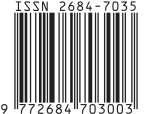HUBUNGAN STATUS SOSIAL ORANG TUA DENGAN KEKERASAN FISIK PADA ANAK UMUR 3-6 TAHUN DI KABUPATEN JEMBER
Abstract
Child abuse is defined as any intentional act or series of acts by a parent or other caregivers that results in harm or threat of harm to a child. Under-three children are prone to receive any form of abuses due to the fact that they are entering periods of temper tantrum and egocentrics. In these periods, children usually gets angry easily and cannot control their emotion as well as pose destructive behavior when what they want cannot be fulfilled by their parents. Consequently, this can become a trigger for parents to do physical abuse to their children. In addition, child abuse brings about hazardous effects such as physical injuries and psycopathology. .
This was an observational study with a cross-sectional study design. Samples were 164 persons. The independent variable was parents’ social status, the dependent variable was child physical abuse, and the extraneous variables were age, marital status, history of receiving abuses from parents, and child’s status. Data were collected through questionnaire and in-depth interview towards four mothers. The data were then analyzed with univariate analysis using statistic descriptive test, bivariate analysis using chi-square test, and multivariate analysis using logistic regression.
There was a significant relationship between parents’ education and child physical abuse (RP=1.3 and CI=1.08-1.57), meaning that the prevalence of child abuse was 1.3 greater in parents with lower educational level than with the higher one. Parents’ occupation was also significantly related with child physical abuse (RP=1.61 and CI=1.04-2.48), meaning that the prevalence of child abuse was greater in children who had parents with lower occupational level than with higher one. Meanwhile, there was no significant relationship between parents’ income and child abuse (RP=1.08 CI=0.92-1.27). The extraneous variables having risks toward child abuse were parents’ marital status and history of receiving abuses from parents.
Parents’ social statuses that were significantly related with child physical abuse were education and occupation. Forms of abuses received by children were being pinched, being beaten, being hit or being tweaked.
Keywords: Parents’ social status, child abuse





